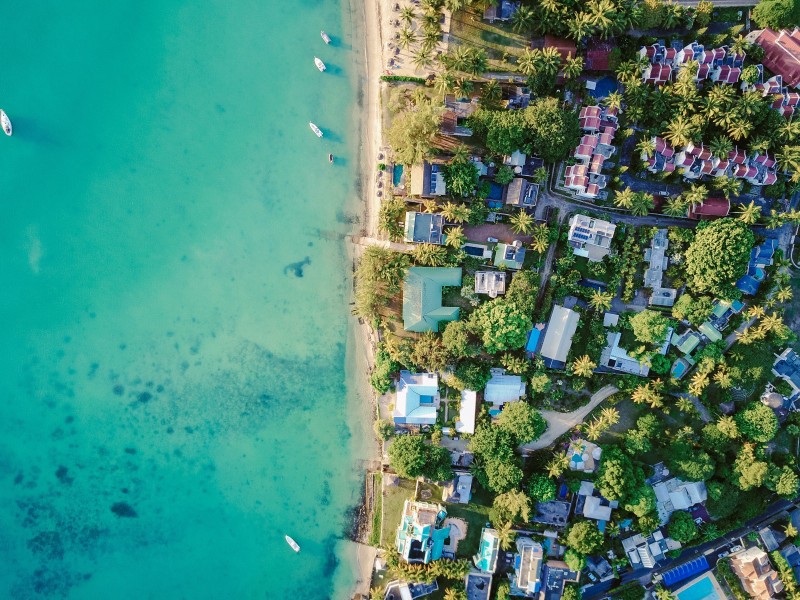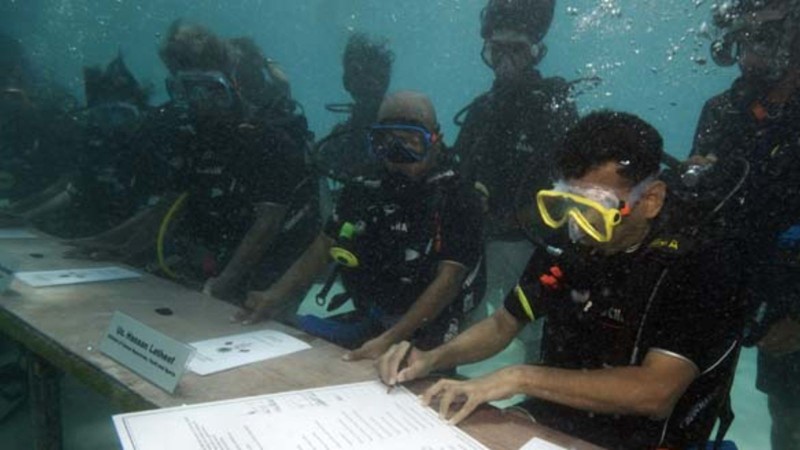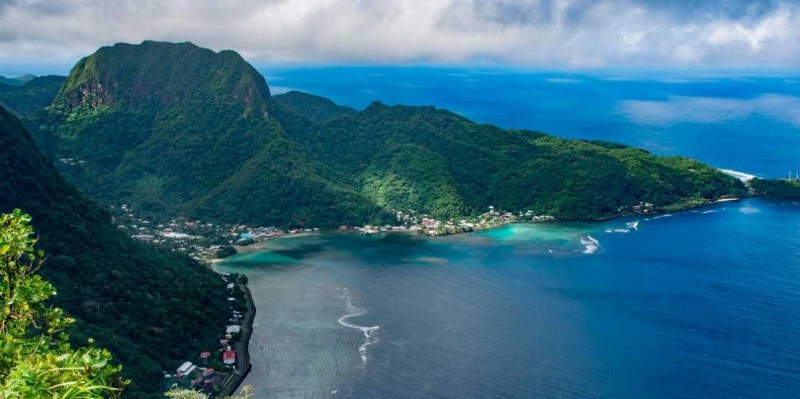Disappearing Islands: What Happens To Their Nations and People?
While climate change deniers gain momentum in some countries, island nations in all corners of the world are already experiencing the devastating consequences of a changing climate. Many islands will soon become uninhabitable, and the question is not if, but when, entire communities will be displaced. Now, in the framework of the midterm review of the SAMOA Pathway, more than ever, nations’ futures are at stake and innovative migration solutions may be the only way out. This questions century-old notions of what it means to be a state.
The difficulties of Life on island nations
Intensified by warmer oceans, tropical storms are becoming more and more destructive, displacing whole populations in one fell swoop. After Hurricane Irma, every one of the hundred thousand people living on the Caribbean island of Barbuda had to leave. For the first time in 300 years, the island was left completely uninhabited after the hurricane destroyed 90% of buildings and vehicles.
It is not only rapid onset events like climate-exacerbated storms that make life on island nations increasingly hard. Climate change effects are seen in the increase of desertification and droughts, affecting the livelihoods of families and the subsistence of farmers. Slow onset processes like the rise in sea levels, coastal erosion, and salt-water contamination are degrading standards of living. Almost a third of the populations of such Small Island Developing States (or SIDS, as they are known) live less than five meters above sea level. Though the combined population of SIDS is about 65 million, or less than 1 percent of the world’s population, these populations are among the most vulnerable to the impacts of climate change.

The daunting reality facing island states
To some extent, the harmful effects of climate change on vulnerable communities can be mitigated. We can work to increase water and food security, enhance resilience from risks including natural disasters such as flooding and drought, and tackle land degradation and the degradation of ecosystem services. Such measures can enable people to remain where they live if they choose to do so.
However, the scale of land degradation and loss of livelihood opportunities due to salt-water flooding of fresh water reserves, and the rising seas will make many island states uninhabitable. It is estimated that in about 30 years, many island nations known for their pristine beaches, bustling tourism, and rich culture, will be threatened with the daunting reality of ceasing to exist.
At the latest at that time, migration will be the only feasible option. In fact, migration to other countries can be a great enabler for families and communities to access safety, as well as economic and development opportunities. But in order to meet this potential, the international community needs to take bold steps to find innovative human mobility solutions.
Migration programs, a viable solution?
So far, migration programs for affected island populations are limited to temporary work opportunities abroad for few people. But as a result of climate change, the island nations of Kiribati, Maldives and Tuvalu may need to move their entire populations elsewhere. Kiribati has recently purchased some territory from Fiji, in anticipation of such a move. A former president of the Maldives (2008 and 2012) declared it to be his objective to set aside funds to enable a purchase of new territory.
Beyond facilitating voluntary migration and relocation of individual households, future mobility schemes need to address what happens if entire communities move. And this requires innovative solutions.
Host states, such as Fiji or Australia, can offer their territory for relocation. But, this is about more than just moving people.
What happens to nations? Three scenarios to consider.
Integration and dissolution: Displaced people of island nations could settle in a range of countries and integrate into their host societies. Legally speaking, the island states would dissolve and lose their right to confer nationality. If people are settled in a range of countries the cultural integration may even be quicker. Over the course of a few generations, their cultural identity vanishes. They lose their culture, and the world as a whole loses. And such a solution would be unfair to the displaced communities. Their forced displacement is a consequence of actions and inactions in many parts of the world. Surely, we cannot expect them to be punished for it.
Self-governing enclaves: Alternatively, host states can give the island states the right to establish territorial enclaves of foreign sovereignty on their territories. Host states and relocated communities will need to agree on the form of association, cooperation and economic and social integration of such territories. And they need to come to terms with what territorial rights such enclaves would enjoy, with regard to immigration, property, electing their leaders, making laws and enforcing them. But is clear that relocated island populations will need tangible protections of their cultural heritage and future, as well as their right to self-determination.
De-territorialized states: Out-of-the-box suggestions include establishing so-called de-territorialized states that operate without state territory — quasi-virtual and diaspora-only entities whose citizens spread across other states. But it might be questionable if such states would have the power to protect their citizens and become more than token institutions.
Finding innovative solutions for entire communities calls into question century-old notions of what it means to be a State. On the upside, the populations of these islands nations are small and finding a solution does not necessarily threaten the overall sovereignty of other states.
In one way or another, climate-change induced rising sea-levels, tropical storms, and salt-water contamination require the world to take action. Small island developing states are just the beginning. Collaborative and proactive solutions to climate change elsewhere have to follow suit. Doing nothing is not an option.


